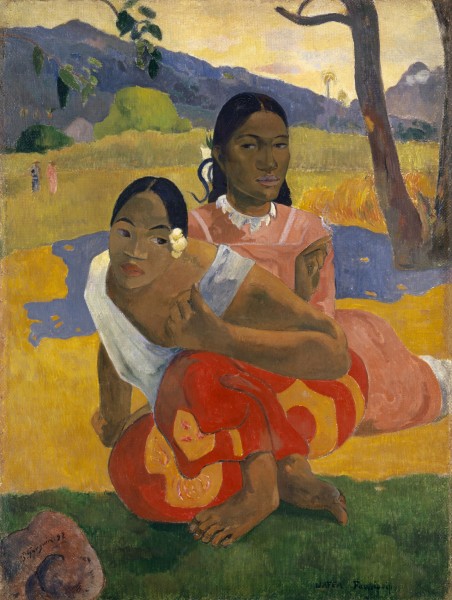 Paul Gauguin, Nafea Faa Ipoipo (When Will You Marry?), 1892, oil on canvas, 40” x 30”, Qatar Museums, Photo via Wikimedia Commons.
Paul Gauguin, Nafea Faa Ipoipo (When Will You Marry?), 1892, oil on canvas, 40” x 30”, Qatar Museums, Photo via Wikimedia Commons.
Last week, artnews reported that Qatar purchased Paul Gauguin’s painting, Nafea Faa Ipoipo (When Will You Marry?), for a rumored $300 million in a private sale.
This is the highest price ever paid for a work of art.
Since its establishment in 2005, Qatar Museums (QM) has attempted to make the country a world leader in museums and culture. With seemingly endless resources, QM has funded projects aimed at celebrating local cultural heritage as well as aggressively collected modern and contemporary art.
One might ask why QM paid such a high price for Gauguin’s painting. The short answer is, “because it could.” But this painting also is advantageous to their mission of assembling a world-class collection of modern art.
Gauguin was a pivotal figure within the Post-Impressionist art movement. Along with his colleague Vincent van Gogh, for the first time in the history of art, the artist expressed his personal point-of-view and feelings in his creations. The concept of art as a form of self-expression derives from the Post-Impressionist period.
Gauguin painted this image when he was living in Tahiti on a quest to free himself from modern society and culture, looking for “pure” and “primitive” experiences. Tahiti was not as colorful as it appears in Gauguin’s art, and in 1890 it largely was westernized; nevertheless, that did not prevent the artist from presenting a world that matched his idealized conception of the “primitive” in a carefully imagined, harmonious color palette (always dominated by a few colors next to each other on the color wheel, i.e., red, orange, and yellow).
 Paul Gauguin, Nafea Faa Ipoipo (When Will You Marry?), 1892, oil on canvas, 40” x 30”, Qatar Museums, Photo via Wikimedia Commons.
Paul Gauguin, Nafea Faa Ipoipo (When Will You Marry?), 1892, oil on canvas, 40” x 30”, Qatar Museums, Photo via Wikimedia Commons.
 Paul Gauguin, Nafea Faa Ipoipo (When Will You Marry?), 1892, oil on canvas, 40” x 30”, Qatar Museums, Photo via Wikimedia Commons.
Paul Gauguin, Nafea Faa Ipoipo (When Will You Marry?), 1892, oil on canvas, 40” x 30”, Qatar Museums, Photo via Wikimedia Commons.

